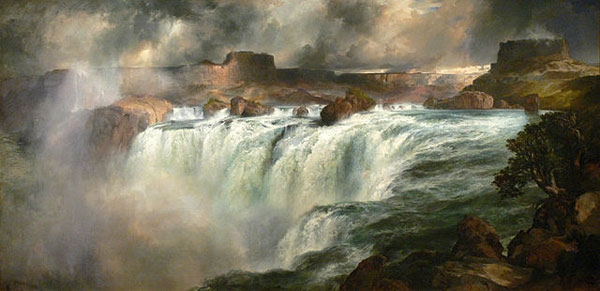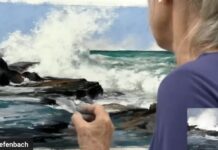
In this series of articles, Utah artist J. Brad Holt talks about what artists are seeing as they look at the landscape. Holt studied geology in college and is attentive to what the rocks suggest in the scenes he paints.
Perhaps falling under the archetype of Daedalus, the artist/scientist might be considered the ultimate polymath, with famous examples like Leonardo da Vinci, Goethe, and John James Audubon. As a landscape painter, I am interested in the artist/scientists who played a role in the exploration of the American West. These include the photographer William Henry Jackson, the artist, geologist, and archeologist William Henry Holmes, and the artist Thomas Moran, who was not a published scientist, but whose work contributed greatly to the scientific efforts of the U.S. Geological Survey.

“The Teton Range From the West,” by William Henry Jackson, 1872, photograph
William Henry Jackson was a Civil War veteran and a pioneer photographer who joined the Ferdinand Hayden Survey of 1871, to the Yellowstone region. He traveled with a retinue of assistants, essentially setting up a back-country darkroom at each camp to process the hundreds of glass-plate photographs he took. Many were the first photos ever taken of such natural wonders as the geysers of Yellowstone and the Teton Range. Jackson’s images played a crucial role in influencing Congress to designate the Yellowstone area as the nation’s first national park, in 1872.

“Grand Canyon at the Foot of the Toroweap — Looking East,” by William Henry Holmes, 1882
The artist, geologist, and, later, archeologist William Henry Holmes also joined the Hayden survey in 1872. As a geologist, he did the original pioneering work on the concept of the laccolithic intrusion (a dome-like geological shape caused by magma swelling between two sedimentary layers), which would later be described by G.K. Gilbert. It is fitting that one of the peaks of the Henry Mountains in Southern Utah, the first described laccolith, bears his name. When the Hayden survey was absorbed into the U.S. Geological Survey in 1879, Holmes went to work for Clarence Dutton, the pioneering geologist. Holmes’s beautiful illustrations enhanced Dutton’s seminal Tertiary History of the Grand Canyon District, 1882. Holmes later gained fame as an anthropologist, producing influential papers on Native American pottery and textiles.

“Grand Canyon of the Yellowstone,” by Thomas Moran, 1872, oil, 84 x 144 1/4 in.

“Mist in Kanab Canyon,” by Thomas Moran, 1892, oil, 44 3/8 x 38 3/8 in.
The English-born American painter Thomas Moran is one of the best known of the luminist artists of the Hudson River School. Along with Albert Bierstadt, he belonged to the sub-category called the Rocky Mountain School. Moran’s flamboyant style was greatly influenced by the British artist J.M.W. Turner, whom he met during a visit to England. Moran’s fame in Philadelphia was such that he was invited to join the Hayden Survey in 1871. His sketches and watercolors were well received, and played a significant role in gaining national park status for the region.




